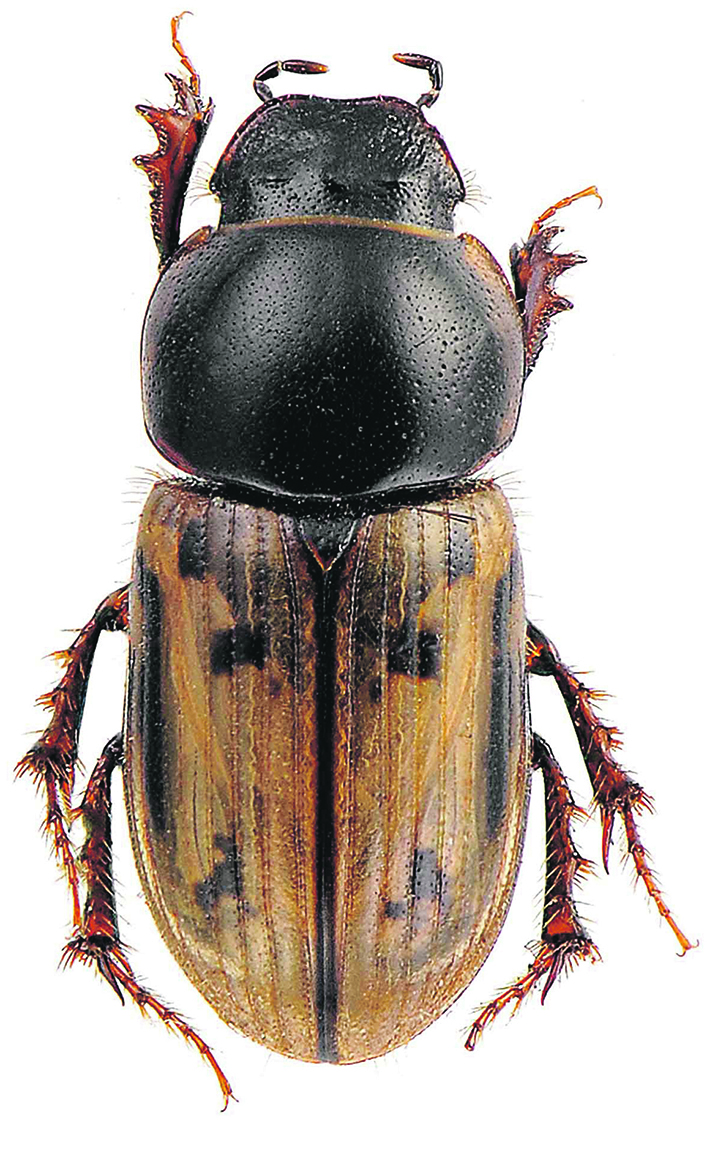Scarab beetles are attracted to fields with manure or rotting plant material, mostly target broadleaf crops
Like clockwork, Lethbridge-based research scientist Kevin Floate starts receiving calls in June asking about a little white grub that’s turning up in crops. Farmers want to know if they should be worried about it.
“Every year for the past 20 years I get phone calls from farmers that are concerned about this white grub. They don’t know what it is, they don’t know what to do about it,” said Floate.
Floate, an insect biocontrol specialist at the Agriculture Canada Lethbridge Research and Development Centre, says in most cases it’s Chilothorax distinctus, a type of scarab beetle attracted to manure and it’s not a big concern.
He said this particular type of scarab beetle overwinters as an adult and emerges in early spring across southern Alberta and begins laying eggs.
“They’re highly attuned to chemicals associated with rotting organic material like manure or compost or silage pit,” said Floate, adding a field freshly spread with manure can be an irresistible attractant.
By mid-June, the scarab beetle larvae emerges, as part of its three-stage growth process, which is usually when Floate starts getting calls asking to identify the white grubs. They have been recorded across southern Alberta over the past century but aren’t necessarily common.
He said canola, pea, corn and even hemp farmers in southern Alberta have reported white grubs after finding crop damage and digging into the soil.
“We haven’t had any reports from farmers about cereal crops,” said Floate. “It’s more broad-leaf crops.”
The connections between the white grub and damaged crops is inconclusive, said Floate. However, that doesn’t completely eliminate concerns.
“Farmers have said, ‘what do I do?’ Do I have to worry about these? Do I spray them? Can I re-seed my damaged field,” said Floate, who started a project last year looking more closely at the beetle after he investigated a pea field heavily damaged in 2020 that had the white grubs.
To figure out if the white grubs caused the damage, that farmer spread chicken manure on half of his field and not the other, said Floate.

“Sure enough, as I suspected, if you put organic material, in this case poultry manure, on the field in the spring, it attracts large numbers of these adult beetles,” he said, while on the other side, “We didn’t find any of these white grub larvae.”
Floate said if white grub density reaches about 100 per sq. metre, crop damage can occur.
The timing of their emergence in mid- to late-June is problematic because it’s likely too late to reseed with the same crop and surface pesticide spraying can’t get to the sub-surface living bug.
He said a farmer who loses an entire field to severe damage could try to reseed with a shorter-season crop but that is likely the only option.
However, usually only a small portion of a field is affected, he said.
Floate has developed a guide for farmers on insects attracted to dung in Canada, which he anticipates will be available later this year.
















